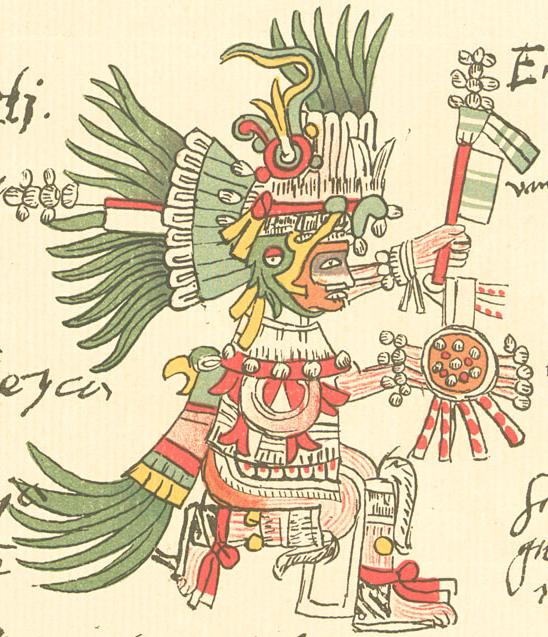The lecture on the Southeastern Ceremonial Complex was one that really drew my interest, as the topics of worship the Mississippians had an odd familiarity to me with concepts and themes in mythologies of other parts of the world and in modern media; so I’d like to use this blog to detail some notable comparisons or inspired works. To start off I’ll mention one of the correlations Professor Watrall mentioned, with the Axis Mundi of the SCC being comparable to the ancient Norse myth of Yggdrasil, or ‘Odin’s Horse/World Tree’. Both act as the bind that ties the worlds of both mythologies together.
Next I’d like to mention Birdman; and not the recent Oscar-winner that I have yet to see. Birds as a warrior symbol of great patronage was also common in Central/South American cultures. In the Aztec Empire for example, Huitzilopochtli, or ‘left-handed hummingbird’, was known as a god of war and deity of the Aztec capital of Tenochtitlan, and was symbolized with a falcon frequently. That two regions so relatively close to each other on the world stage can have similar military symbolism attached to birds strikes me as incredibly fascinating, as it can really tell a lot about cultures view of nature. It’s good to note too while we’re on this topic that the Norse peoples, and many others throughout the past, have generally used eagles, falcons, and other predatory birds as symbols of war and strength.

Pictured, a representation of Huitzilopochtli. Note the feathered cap and backside.
Another mythological comparison can be made between the figure of Redhorn, one of the five sons of the Earthmaker, and Ancient Greek mythology. What struck me there was a similar circumstance between the Earthmaker and Redhorn, and the Greek God of Gods Zeus and his creation of many of his progeny, including Athena and Herakles. Redhorn was created directly by the hand of the Earthmaker, as Zeus created Athena from his own forehead. And like Zeus sent Herakles to perform great feats on Earth, Redhorn was sent to Earth to protect the humans, though this is admittedly a less qualified comparison since Zeus’ character is portrayed as decidedly more gray at best in Greek mythology. What can be taken from this though is the personal connection we can see ancient peoples form to their mythologies, drawing a direct connection to their gods from avatars sent to help them or perform daring feats on Earth.
Now to mention a modern comparison, one that hit me like a freight train in class when they were mentioned, is of the Great Serpents. These powerful denizens of the Beneath world, plotting to scheme against the Thunderers of the Above World and humanity, reminded me suspiciously of characters from one of my favorite sources of entertainment, the game Dark Souls. In Dark Souls, the main character is an undead hero who must find the lost Gods of the world and restore the land of Lordran to life, and one of the main characters to meet you on your journey are known as the ‘Primordial Serpents.’ These are hideous, serpent creatures that stretch into a black maw known only as ‘the Abyss’ and are known to plot against the Gods of the world, and promise great power to the player character if they follow their designs.

The player character of Dark Souls meeting Kingseeker Frampt, one of the Primordial Serpents.
When Professor Watrall mentioned the Great Serpents in class, I immediately envisioned them as the serpents of the game, as the similarities were astounding. I think this is a terrific example of how these common themes and imagery can transcend time and cultures, until we arrive where we are now. All throughout the lecture on the Mississippians I found similarities to their stories with others and ours, and finding these connections made them that much more ‘real’ to me, and I’m sure anyone who learns of these topics does the same thing to relate them to their own understanding of mythology and media.